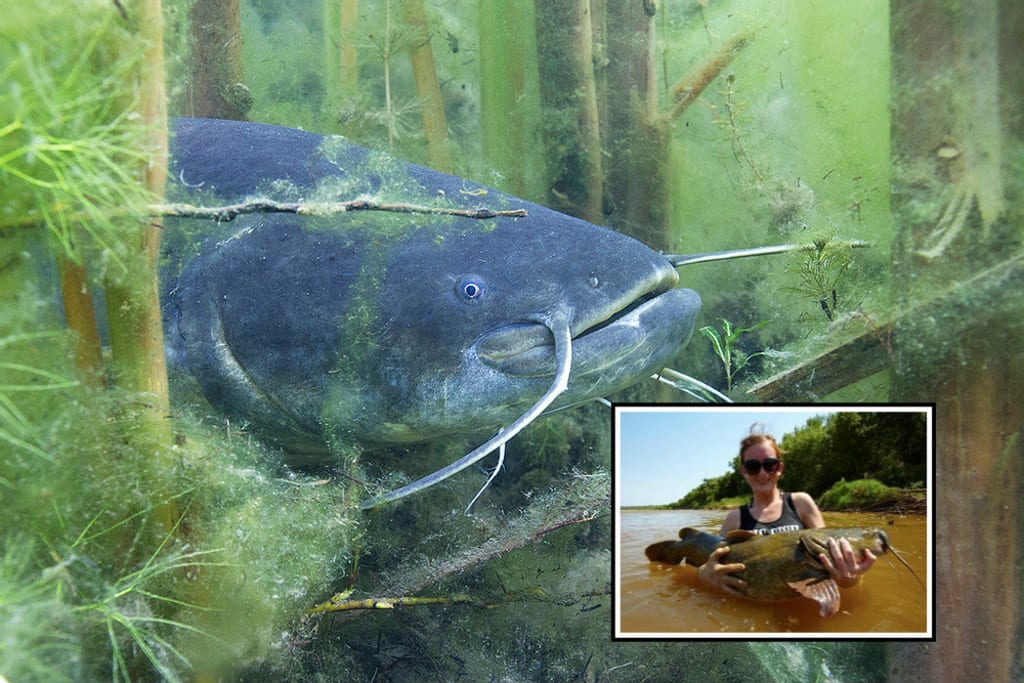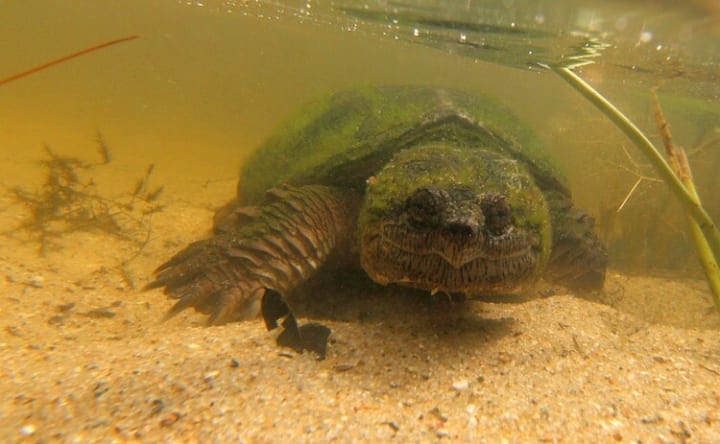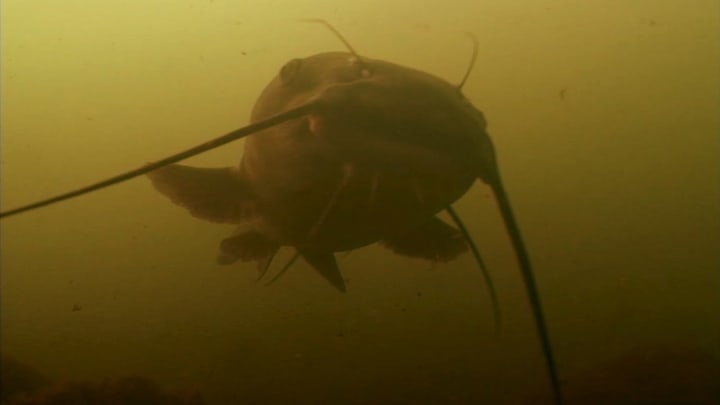Catfish Noodling
"With the use of an underwater drone."

For the past twenty years, I have been hooked! Well, let me rephrase that, since we don't use hooks to catch fish when noodling, I'll say that I have been obsessed.
I began loving it, even more, when my husband gave me the QYSEA FIFISH V6 Underwater ROV (drone) as a gift. Not only do I adore catching fish on a warm, sunny day but underwater photography has also become a real passion of mine as well.

So you might be wondering - "What the heck is Catfish noodling?"
Noodling is fishing for catfish using one's bare hands, and is practiced primarily in the southern United States. The noodler places their bare hands inside of a discovered catfish hole and attempts to catch the fish.
Simply put, noodling involves finding a Catfish hiding underwater, sticking your arm in its mouth, and dragging it out of the water with your bare hands. You use your own fingers as bait and the Catfish’s bite as the hook. Because of this, noodling is also known as “hand-fishing” or “grabbling,” as well as more inventive names like “gurgling” and “cat-daddling.”

Many fishermen, such as myself prefer a catch-and-release method if they enjoy fishing but do not want to kill or injure the fish. While using a hook will not kill them, it is still painful for the fish. Because of this, people may feel that fishing without a hook (noodling) is a more humane method.
Although the concept of catching fish with only the use of the arm in the water is simple, the process of noodling is more complicated. The choice of catfish as the prey is not arbitrary but comes from the circumstances of their habitat. During the spawn, catfish will dig or enter a hole underneath a structure submerged in the water. The female will lay the eggs in the hole and the male will guard the eggs. When the eggs become fry, they will leave and the male will also leave the hole.

To begin, a noodler goes underwater to depths ranging from only a few feet to twenty feet and places his or her hand inside a discovered catfish hole. If all goes as planned, the catfish will swim forward and latch onto the fisherman's hand, usually as a defensive maneuver, in order to try to escape the hole. If the fish is particularly large, the noodler can hook the hand around its gills. Some people use underwater cameras to find these huge lunkers before placing their hands inside of the hole. Even if you miss the fish, you can capture some very amazing photos.

Noodling is not for everyone - In fact, it can be rather risky and dangerous. It's also illegal in some areas. I personally have made several trips to the Emergency Room due to my love for this sport.
Noodling can result in superficial cuts and minor wounds. Losing fingers is also a risk, whether from the bite or infection. Most holes are deep enough that diving is needed, so there can be a danger of drowning. A person with confident swimming abilities may be caught off guard by the added strain of carrying a large fish to the surface.

Spotters can alleviate this danger, but it is still present. A wounded noodler ten to twenty feet underwater might not be able to return safely to the surface and may drown. Clothes may get tangled or snagged on roots or rocks.
The greatest physical threat posed to noodlers, however, comes from other forms of aquatic life found in catfish holes. Far more dangerous than catfish are alligators, snakes, beavers, muskrats and snapping turtles, who will take over abandoned catfish holes as homes of their own.

Catfish are the choice for noodling because they like dark cool waters and often select holes and pools under brush near the banks of creeks and rivers. Their pools are isolated in their depth from the rest of the water surrounding them so you can stand more easily.
Search in shallow water for a catfish hole so you can wrestle the catfish without being too deep. Usually catfish holes are near the shore, in fallen logs, under rocks or puddles in mud banks. Catfish nest wherever they can be well submerged and feel safe.

Once you or your spotter find a catfish hole, or suspected hole, you need to block off the exit routes. Use the shore, your spotter, rocks and sandbags. Then poke a stick into the hole to see if you can tell if it is a catfish. At the very least, you should be able to tell if it is a snake or not. More commonly folks use underwater cameras and video equipment, but since this is rather expensive, most people just poke around and hope for the best.

On a warm summer day, you'll find me at the river, elbow-deep in a catfish hole and taking photos that I can tell my grandchildren about!
About the Creator
Rebecca Lynn Ivey
I wield words to weave tales across genres, but my heart belongs to the shadows.
❤️Heart and subscribe!
💲Tips mean the world!






Comments
There are no comments for this story
Be the first to respond and start the conversation.